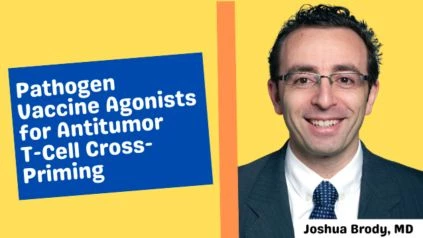Joshua Brody, MD – Director, Lymphoma Immunotherapy Program Icahn School of Medicine at Mount SinaiHess Center for Science and Medicine – Pattern recognition receptor agonists in pathogen vaccines mediate antitumor T-cell cross-priming
What is the role of primed CD8 T-cells in cancer immunotherapies, and how does their recognition of tumor antigens presented on MHC-I contribute to the antitumor response?
What are the critical factors in loading dendritic cells (DC) with tumor antigens, and how can we optimize this process to enhance antitumor T-cell responses?
Can you explain the advantages and limitations of using neoantigen vaccines based on individualized tumor exome and RNA sequencing compared to the “off-the-shelf” in situ vaccination (ISV) approach?
How do pathogen vaccines, which contain natural pattern recognition receptor agonists (naPRRa), activate dendritic cells for cancer vaccination, and what are the potential benefits of using naPRRa in comparison to synthetic PRRa?
In the context of cancer immunotherapy, what are the unique activation profiles of different naPRRa, and how can this information be used to improve the design of immunotherapies that target specific tumor types or patient populations?
What is the purpose of PCA (Principal Component Analysis) in Figure 3A, and how does it help in understanding the immune cell activation profiles induced by different naPRRa (Pattern Recognition Receptor Agonists)?
Could you explain the significance of TRIF and MyD88 pathways in naPRRa activation? What are the implications of naPRRa activation through these pathways in terms of immune responses?
How were TLR-/- RAW cells utilized to identify specific TLR mechanisms for several naPRRa? What were the key findings from this analysis?
What is the rationale behind using the BCG-PedvaxHIB-Rabies combination (B/P/R) and how does it compare to single agent vaccines in terms of DC activation and T-cell priming, as shown in Figure 4B and 4C?
In Figure 4G and 4H, it is mentioned that B/P/R-ISV antitumor immunity is partially dependent on Batf3 DC. Can you elaborate on the role of Batf3 DC and why it might be relevant for B/P/R-ISV therapy?

